Superior Durability
MI Varnish™ features a hydrogenated rosin matrix that ensures high fluoride, calcium and phosphate ions availability, combined with translucency and exceptional durability. This enhanced formulation means MI Varnish™ can provide exceptional protection from dentine hypersensitivity.
MI Varnish™ contains NaF and RECALDENT™ (CPP-ACP) dispersed in a rosin and ethanol solution. When MI Varnish™ is applied, it adheres to the tooth and seals exposed dentine tubules. Contact with saliva sets the varnish and starts the slow dissolution process, driving the release of fluoride and RECALDENT™ (CPP-ACP). Fluoride ions that are released bind with calcium ions in pellicle and plaque, to form globules of calcium fluoride. These globules deposit on the tooth surface, providing additional blockage of exposed dentine tubules, enhanced acid resistance and promote calcium and phosphate-enriched saliva.
MI Varnish Technique Guide
-
Tooth surfaces should be cleaned and completely dried before application of MI Varnish™. A prophylaxis is not required.
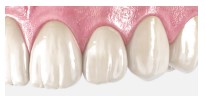
-
Peel off the foil lid of the unit dose container of MI Varnish™.
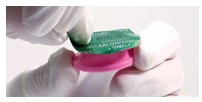
-
Stir MI Varnish™ with the disposable brush before application.
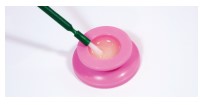
-
Apply a thin, uniform layer to minimise clumping. Only apply one layer.
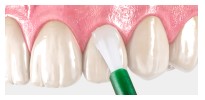
-
MI Varnish™ sets when in contact with water or saliva; if desired, once MI Varnish™ is applied, wet tooth surfaces using triplex syringe to accelerate MI Varnish™ setting.
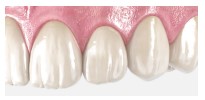
After Application
MI Varnish™ should remain undisturbed on the teeth for four hours. Instruct patients to avoid hard, hot or sticky foods, tooth brushing and flossing, products containing alcohol (oral rinses, beverages, etc.) during this time period.
Q&A
1. What is the shelf life of MI Varnish™?
MI Varnish™ has a 3 year shelf life from manufacturing date.
2. How much material is there in a unit dose?
MI Varnish™ one unit dose package contains 0.4ml (enough for a full adult dentition).
3. Are fluoride varnishes suitable for all patients?
According to the American Dental Association Council on Scientific Affairs, fluoride varnish applications every three to six months are recommended for children younger than 6 years, adolescents and adults, who are at elevated risk of developing caries.**
4. Can MI Varnish™ be used on patients with crowns and veneers?
Yes, MI Varnish™ can be applied to the margin area of crowns or veneers.
5. Is prophylaxis (cleaning) required before the application of MI Varnish™?
No, MI Varnish™ does not require a prophylaxis treatment prior to application.
6. Why is a thin application better?
The best outcome when applying MI Varnish™ is prolonged retention on tooth surfaces. A thick application means a higher chance of clumping – if clumping occurs, this tends to be less comfortable and patients might feel the need to pull on pieces of the set material. Applying one thin layer of MI Varnish™ provides the best outcome for protecting tooth surfaces and for patient’s comfort.
7. Are there any contra-indications?
- MI Varnish™ contains RECALDENT™ (CPP-ACP) which is derived from milk casein.
- Do not use MI Varnish™ on patients with proven or suspected milk protein allergies.
- Do not use MI Varnish™ on patients with ulcerative gingivitis and stomatitis.
- The ingredient rosin used in MI Varnish™ is a processed pine tree extract and not an extract of pine nut. A patient with recognised allergies should consult his/her medical professional for guidance.
- If any allergic reaction occurs, this may indicate sensitivity to a component of the product. In this event, discontinue use of the product and contact patient’s physician.

 References
References
** Weyant RJ et al. Topical fluoride for caries prevention: executive summary of the updated clinical recommendations and supporting systematic review. J Am Dent Assoc. 2013 Nov;144(11):1279-91.
Article Published in Dental Solutions Feb-March 2024